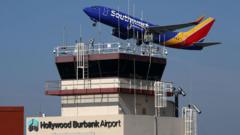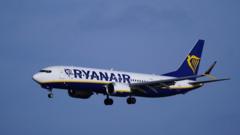A midair collision near Washington D.C. resulted in the deaths of 67 individuals, including 64 passengers on an American Airlines flight and three U.S. service members. Fresh insights reveal concerning air traffic control conditions at the time.
Tragic Midair Collision Claims 67 Lives Near Washington D.C.

Tragic Midair Collision Claims 67 Lives Near Washington D.C.
An American Airlines jet and a U.S. Army helicopter collided in a devastating incident, leading to the recovery of numerous bodies from the Potomac River.
A horrific midair disaster near Washington D.C. has claimed the lives of 67 individuals after a commercial airliner collided with a military helicopter, crashing into the frigid waters of the Potomac River. Recovery teams worked tirelessly yesterday, pulling more than two dozen bodies from the icy depths following the tragic incident that unfolded on Wednesday evening.
The American Airlines jet, which was en route from Wichita, Kansas, carried a total of 64 people onboard, while the U.S. Army helicopter had three service members aboard. This disaster marks a significant moment in aviation safety, being the most catastrophic midair collision involving a commercial aircraft in the United States since 2009.
Preliminary reports indicate that a change in the landing course could have contributed to this calamity. Air traffic control audio recordings revealed that the aircraft’s pilots received instructions to adjust their landing pattern just moments before the collision occurred. Eyewitness accounts suggest that staffing in the air traffic control tower was substandard, with one controller tasked with managing both helicopter traffic and simultaneous aircraft landings, a workload typically distributed between two controllers.
Among those lost in the incident were several notable figures, including both U.S. and Russian figure skaters returning from a training camp in Kansas following their national championships. The tragic event underscores the importance of rigorous aviation safety protocols and raises critical questions regarding air traffic management in congested airspace. Further investigations are anticipated as families mourn the irreparable losses in this national tragedy.





















